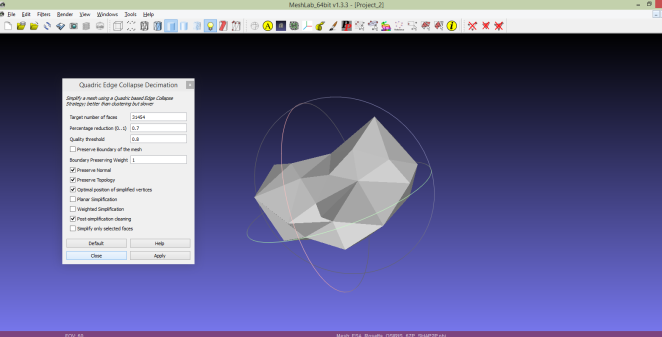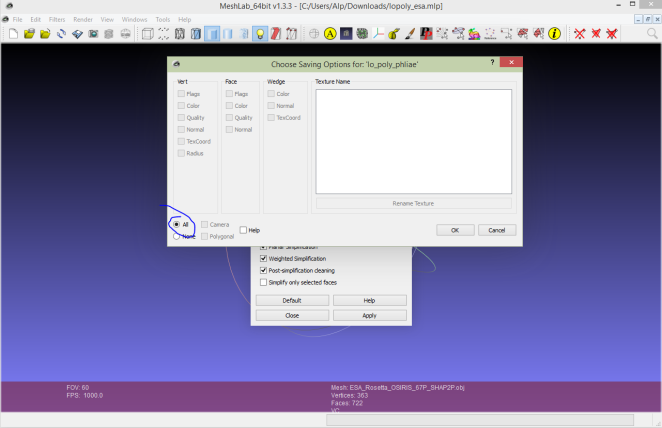Something happened in the late 2000’s which made took us go from super high polygon counts to favor low polygon counts in models. I’m not sure if it was the yearning for the 90’s but these lo polygon models became quickly a hit. You can find a whole section in Thingiverse dedicated to high quality models exquisitely dubed down to low polygon models.
http://www.thingiverse.com/glitchpudding/collections/lowpolyholiday
I have to admit they do look really cool. I’m just guessing it’s the nostalgic beauty that’s talking back to us.
I was playing around with the Philae comets model availible from ESA and I wanted to see how this would looks as a low polygon model. I think this could be a great ornament for the Christmas tree. (http://blogs.esa.int/rosetta/2014/07/28/updated-comet-shape-model/)
To manipulate STL files I usually go to my favorite tool MeshLab. It’s an open source utility that’s incredibly helpful. If you haven’t already downloaded it get it here: http://meshlab.sourceforge.net/
Once you’ve loaded up meshlab it’s pretty straight forward to manipulate the mesh. STL or POLY files are made up of triangles that you can run reduce and manipulate using different models. For our little comet we will need to reduce the number of vertices we have in the mesh.
To do this I’ve found the most useful method is Filters > Remeshing, Simplification, Reconstruction> Quadratic Edge Collapse Decimation.
Here you’ll find a number of variables. I’ve found that most important to variables are Quality and Percentage reduction.
Percentage reductions is the amount of the vertices that should be kept. I use a number like 0.8 here and rerun the simplification multiple times. Each iteration will reduce 0.8 of the vertices.
Quality I’ve found difficult to decipher but using 0.5 had good result for me.
Preserve topology leave checked. (Helps keep the shape surface as is)
Preserve Normal leave checked.(Prevents flipping of surfaces)
Weighted simplification unchecked (This helps with a mor uniform simplification)
You should run the simplification algorithm multiple times. Unfortunately there is no undo function in meshlab so if things go too far you’ll have to start from the beginning.
If you wish to further manipulate the mesh in say solidworks you’ll have to export this mesh as a DFX file which solidworks can open as an object. Though granted you’ll have to do some healing
Make sure you export all surface when you export the mesh as DFX.
Now you can import the dfx file in solidworks or your 3d modeling program of choice.
Happy low poly holidays.
Alp


